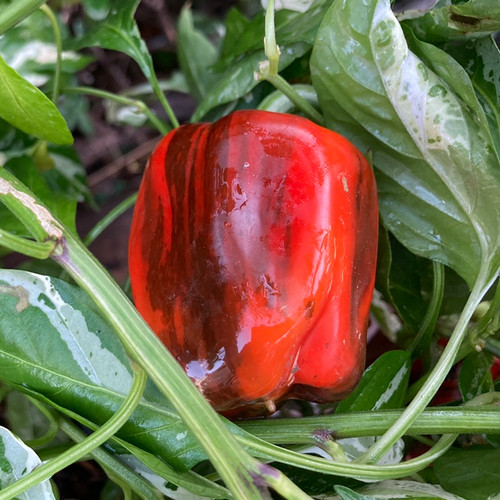Don't let its sweet name fool you, the Candy Cane pepper has a medium heat level and a delicious flavor similar to the Serrano and Cayenne pepper. The Candy Cane pepper, also known as the Fish pepper, develops green and white stripes on the pods as it matures to red, which explains its most recent naming. Although it was originally called the Fish pepper, many growers have recently referred to it as the Candy Cane pepper because of the more appetizing name.
The pepper has a storied past as it was a culinary staple for oyster and crab houses during the late 19th and early 20th centuries in Baltimore and the mid-Atlantic states. It was blended into cream sauces for crab and fish dishes. In addition to its delicious flavor, the Candy Cane pepper has a very unique ripening pattern with variegated pods and leaves. It is one of the rare peppers is considered both a cooking pepper and an ornamental pepper plant. The leaves of a single plant can vary in appearance as some can be full green, full white, or have both green and white speckles and stripes. When the Candy Cane pepper is young, it is a solid creamy green color, and milder in flavor. As it matures, the Candy Cane pepper often develops stripes and eventually turns solid red when it is completely ripe.
The Candy Cane pepper averages about 5,000 to 30,000 Scoville Heat Units and its flavor is described as fresh and bright. In addition to enhancing the flavor of seafood, the Candy Cane pepper is also a terrific pepper for medium-heat salsas and hot sauces.












